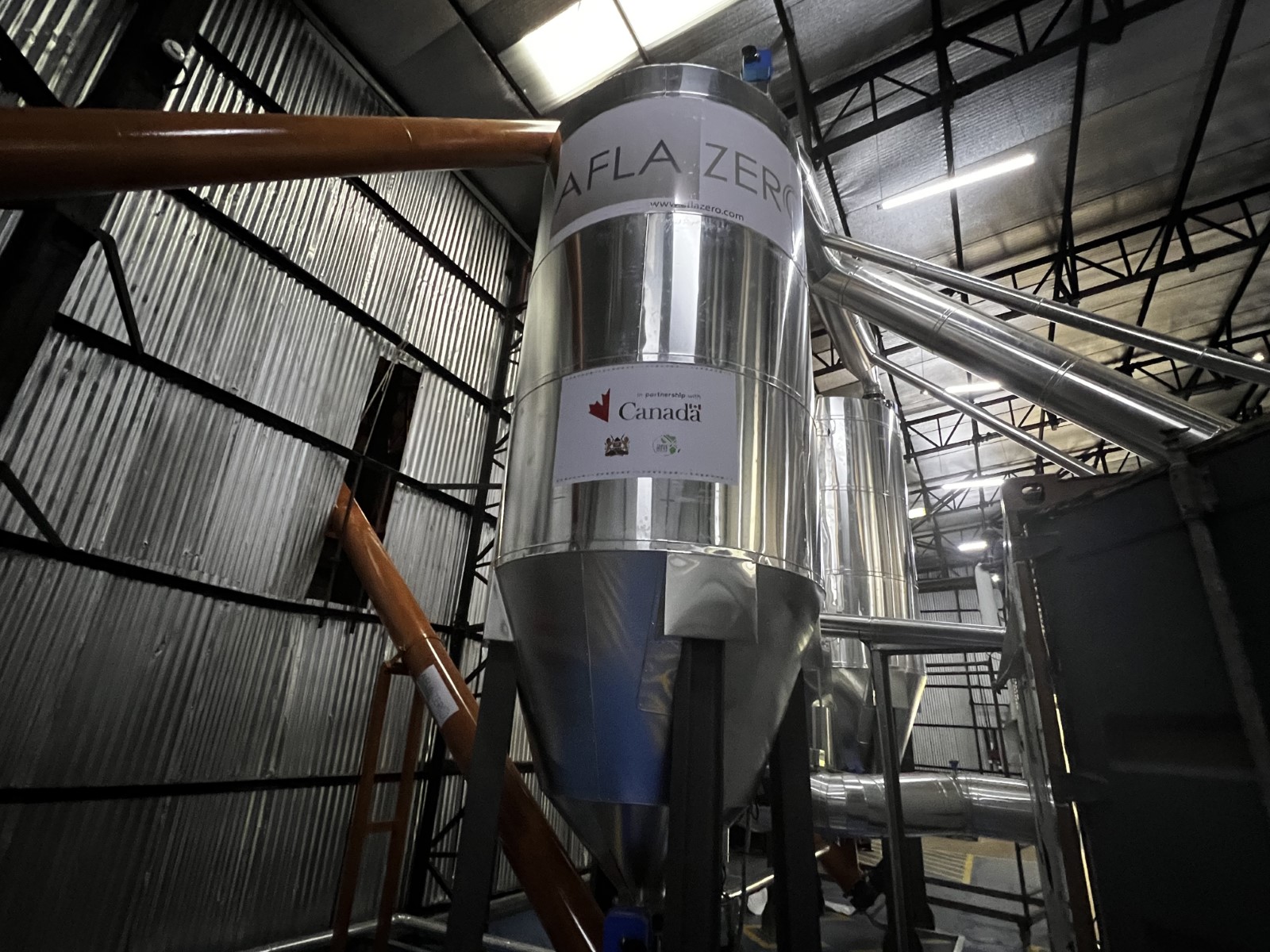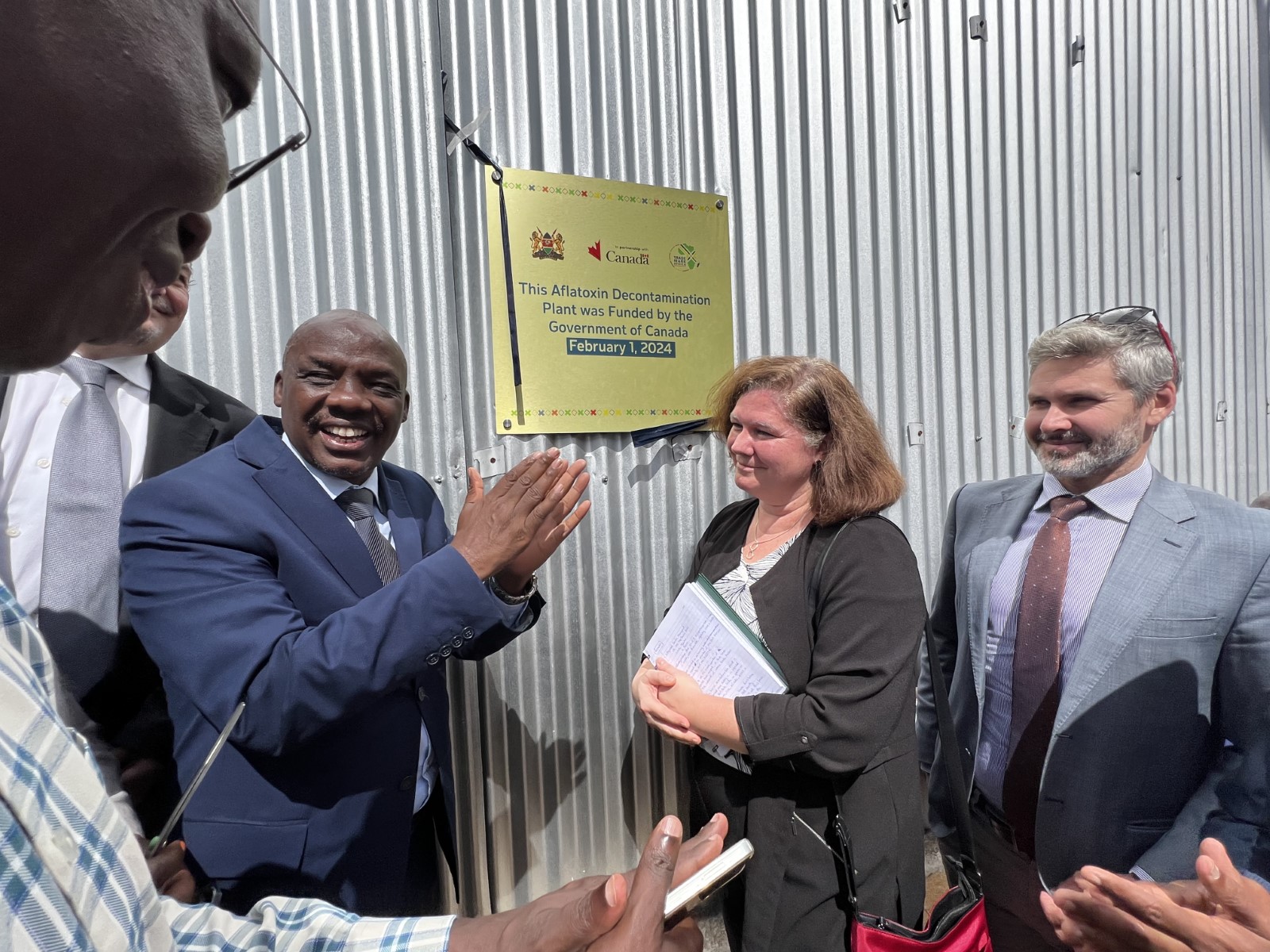Bungoma, February 01, 2024: The Canadian Government, through TradeMark Africa (TMA), has provided aflatoxin decontamination plants to the National Cereals and Produce Board (NCPB) depots in Bungoma and Nairobi. This will enhance food security by creating the capability to significantly reduce aflatoxin contamination in grains like maize. Aflatoxins are recognised by the World Health Organisation as highly toxic substances affecting grains, pose health risks to animals and humans, including cancer. Most countries implement strict regulations and monitoring to control their levels in food and feed products.
Canada contributed CA$ 1.6million (about Ksh190 million) for the purchase and installation of these decontamination units, which will improve the safety and increase the trade of grain in Kenya and broader East Africa region. These state-of-the-art machines are designed to efficiently remove contaminants while preserving the nutritional value and integrity of the food.

The two large-scale decontaminators, a first of their kind in commercial use in Africa, can eliminate up to 98% of aflatoxins in various food commodities, including grains, pulses, nuts. This development is a game-changer for the region, where maize is a primary food source for an estimated 300 million people. Western Kenya was deemed a strategic location to set them up, as the country’s grain basket, and because it plays a crucial role in regional grain trade, with significant inflows from neighbouring Uganda and Tanzania. Over 600,000 metric tons of maize are traded annually from Uganda to Kenya, and about 400,000 metric tons from Tanzania to Kenya. Ensuring that only grain meeting the acceptable aflatoxin limits is allowed to trade freely is crucial for human health and safe trade.

At the hand-over ceremony in Bungoma, Global Affairs Canada (GAC) Executive Director, Marcia Colquhoun, highlighted the plant’s role in facilitating trade of essential grains and supporting food security, saying, “The aflatoxin decontamination plants are expected to facilitate trade in grains such as maize, sorghum, rice, oilseeds, spices, and groundnuts thus supporting the overall goals of food security and trade facilitation in this region, particularly for small-scale and women cross border traders.”
Mr Beer expressed optimism about the expanded trade opportunities and improved food security the facility will bring. “This facility is potentially a game-changer. It is now possible to reduce aflatoxin contamination in grains post-harvest, so reducing the amount that will be rejected at the border. This will benefit both small scale farmers and traders on the one hand, and consumers such as schools, humanitarian agencies and businesses on the other. This is part of TradeMark’s commitment to reduce trade barriers at borders.”
On his part, Dr. Ronoh, said: “If we are to tackle food security and food safety issues not just in Kenya but across East Africa, there is no denying that partnerships such as the one we are witnessing here today, are of utmost necessity in availing modern solutions like the grain aflatoxin decontamination facilities.”
 The funding for this project is part of a larger CA$3 million (about Ksh 350 million) package from Canada. The remaining funds are allocated for training and creating more awareness on aflatoxins to regulatory agencies, farmers and traders in Kenya, Tanzania, and Uganda on managing aflatoxins in grain supplies.
The funding for this project is part of a larger CA$3 million (about Ksh 350 million) package from Canada. The remaining funds are allocated for training and creating more awareness on aflatoxins to regulatory agencies, farmers and traders in Kenya, Tanzania, and Uganda on managing aflatoxins in grain supplies.
–Ends-
Download file













